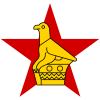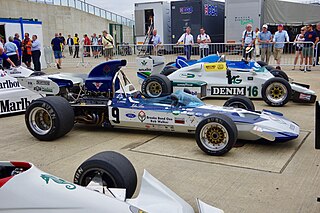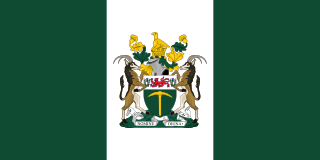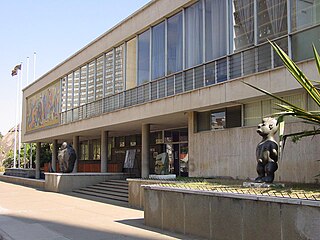| History of Zimbabwe | ||||||||||||||||||||||||||||||||||||||||||
|---|---|---|---|---|---|---|---|---|---|---|---|---|---|---|---|---|---|---|---|---|---|---|---|---|---|---|---|---|---|---|---|---|---|---|---|---|---|---|---|---|---|---|
 | ||||||||||||||||||||||||||||||||||||||||||
Ancient history
| ||||||||||||||||||||||||||||||||||||||||||
White settlement pre-1923
| ||||||||||||||||||||||||||||||||||||||||||
| History of Zimbabwe | ||||||||||||||||||||||||||||||||||||||||||
|---|---|---|---|---|---|---|---|---|---|---|---|---|---|---|---|---|---|---|---|---|---|---|---|---|---|---|---|---|---|---|---|---|---|---|---|---|---|---|---|---|---|---|
 | ||||||||||||||||||||||||||||||||||||||||||
Ancient history
| ||||||||||||||||||||||||||||||||||||||||||
White settlement pre-1923
| ||||||||||||||||||||||||||||||||||||||||||

Bulawayo is the second largest city in Zimbabwe, and the largest city in the country's Matabeleland region. The city's population is disputed; the 2022 census listed it at 665,940, while the Bulawayo City Council claimed it to be about 1.2 million. Bulawayo covers an area of 546 square kilometres in the western part of the country, along the Matsheumhlope River. Along with the capital Harare, Bulawayo is one of two cities in Zimbabwe that are also provinces.

Matabeleland is a region located in southwestern Zimbabwe that is divided into three provinces: Matabeleland North, Bulawayo, and Matabeleland South. These provinces are in the west and south-west of Zimbabwe, between the Limpopo and Zambezi rivers and are further separated from Midlands by the Shangani River in central Zimbabwe. The region is named after its inhabitants, the Ndebele people who were called "Amatabele"(people with long spears – Mzilikazi 's group of people who were escaping the Mfecani wars). Other ethnic groups who inhabit parts of Matabeleland include the Tonga, Bakalanga, Venda, Nambya, Khoisan, Xhosa, Sotho, Tswana, and Tsonga.

John Maxwell Lineham Love was a Rhodesian racing driver. He participated in 10 Formula One World Championship Grands Prix, debuting on 29 December 1962. He achieved one podium, and scored a total of six championship points. He also won the 1962 British Saloon Car Championship, now known as the British Touring Car Championship. All but one of his Formula One entries were in races held within Africa, either as championship or non-championship rounds.

The National Railways of Zimbabwe (NRZ), formerly Rhodesia Railways (RR), is a Bulawayo headquartered state-owned enterprise that operates the country's national railway system. It was established in 1893 and is governed by an Act of Parliament. It has a commercial-administrative center in Harare and a supply center in Gweru. The Zimbabwean railway system was largely constructed during the 20th century.
The Northern Ndebele people are a Nguni ethnic group native to Southern Africa. Significant populations of native speakers of the Northern Ndebele language (siNdebele) are found in Zimbabwe and in South Africa.

The Rhodesia cricket team played first-class cricket and represented originally the British colony of Southern Rhodesia and later the unilaterally independent state of Rhodesia which became Zimbabwe. In 1980 the Rhodesia cricket team was renamed as the Zimbabwe-Rhodesia cricket team, and in 1981 it adopted its current name of the Zimbabwe national cricket team.
Alfred Mulock Bentley (1878–1956) was an Irish-born financier who founded the Rhodesian Stock Exchange in Bulawayo in 1946. He served in the Boer War from 1899-1902.

Kadoma, formerly known as Gatooma, is a town in Zimbabwe.
August Machona Musarurwa was a Zimbabwean musician, best known for having composed the 1950s hit tune "Skokiaan".
Fletcher Dulini Ncube was a Zimbabwean politician who served as the Member of Parliament for Lobengula-Magwegwe. He was born at the Hope Fountain Mission in Zimbabwe on January 9, 1940.

The National Gallery of Zimbabwe (NGZ) is a gallery in Harare, Zimbabwe, dedicated to the presentation and conservation of Zimbabwe's contemporary art and visual heritage. The original National Gallery of Rhodesia was designed and directed by Frank McEwen, a British citizen credited with bringing Shona Sculpture to the spotlight. The Gallery was officially opened by Queen Elizabeth The Queen Mother on July 16, 1957, and Queen Elizabeth II attended the sixth Zimbabwe Heritage Exhibition there in October 1991.
Great Zimbabwe University (GZU) is an institution of higher learning in the city of Masvingo, Zimbabwe. It is currently situated on the Masvingo Teachers’ College campus seven kilometres east of Masvingo CBD. Currently the institution has a number of campuses in and around the city, including some in the high density suburb of Mucheke, most notably the school of tourism and hospitality situated on a hill on what used to be a hotel. The Herbert Chitepo law school and the library are among the campuses in the center of town. There are also newly built campuses to the west in the industrial zone of the city, whose buildings stand out along the Bulawayo highway. There is another campus in the mining town of Mashava 40km west of Masvingo. A larger campus is soon to be built near the Great Zimbabwe National Monument, the namesake of the university.

Christianity is the most widely professed religion in Zimbabwe, with Protestantism being its largest denomination.

The Mtshabezi River is a tributary of the Thuli River in southern Zimbabwe. Mtshabezi river's source is in Matopos Hills, an area of granite kopjes and wooded valleys commencing some 35 kilometres south of Bulawayo, southern Zimbabwe. It supplys the Mtshabezi Dam which has become the 6th dam to supply is the second largest city in Zimbabwe, Bulawayo.

The history of the Jews in Zimbabwe reaches back over one century. Present-day Zimbabwe was formerly known as Southern Rhodesia and later as Rhodesia.

Bulawayo City F.C. is a Zimbabwean football club based in Bulawayo, formed in 2006. They were champions of the Southern Region Division One in 2015 and in 2019. Their home shirt colors are red shirts with white edges, white shorts and red socks.

Martin K. Moyo is the former Mayor of the City of Bulawayo in Zimbabwe. He is married to Violet Bhebhe with whom they have a son named Likhwa Milton Moyo. He was voted in as the Councillor for the City of Bulawayo's Ward 3 in 2008. He successfully contested the local authority's Ward Elections again in 2013, after which he was voted in as the city's Mayor by the Councillors.

Founders High School is a public high school in Bulawayo, Zimbabwe. It includes both day and boarding students.
The following is a timeline of the history of the city of Bulawayo, Zimbabwe.

Beira-Bulawayo railway, also called Machipanda railway, Beira-Harare-Bulawayo railway and Beira railway, is a railway that connects the city of Beira, Mozambique, to the city of Bulawayo, in Zimbabwe. It is 850 km long, in a 1067 mm gauge.